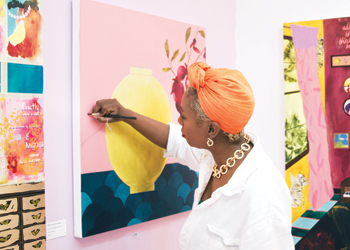In his most recent blog (at the point I post this) Art Morris included a short section titled "The Fact$ of Life": the following is the extract - but do follow the link to view Arts site:
"The market for editorial sales of natural history images has virtually disappeared. The incomes of the world’s top stock photographers are down by at least 90%. Like me, most depend on income from photo trips, the sale of educational materials, and income from this or that affiliate program.In 2001, BAA sold the publication rights to images for nearly one-quarter million US dollars. That amount dropped to about $20,000 by 2011, and in 2017, to slightly more than $2,000.00. We’ve stopped counting. IPTs used to fill within days. Now I am happy to go with one or two folks, but I’d much rather have you along. And so it goes. In 2009, I turned to creating educational blog posts, now to the tune of 4026. Yes, 4026 educational blog posts."
Is Art's experience common ? -- is the trend towards ever lower and lower image values now inevitable -- and to avoid a lengthy AI debate -- but some folk just do not look for real natural images any more.
Of course we are bombarded by images and clips and whole productions these days -- my hope was this would expand demand for great images not seemingly curtail it.
I know that prices for genuine works of art - the ones one might hang on a living room wall - like those sold by David Yarrow in the Maddox Galley appear to still be selling and on offer for high prices. BUT - the market for stock images appears to have gone and so I see galleries closing, Fine art photographers "giving up" having to move on.
Now that cameras are all great, that lifestyle and traveling is a career in itself (amazing to me) and there are just so many images out there - has the value (to others) of an image trended to zero (or close to it) and as a result many folk who used to make a living are struggling to sell their prints or images.
Is it that the genre that sells or are acceptable have changed?
I assume there is still a market for the unique - the unique action moment we have not seen many many times before. Are these not simply flooded out by someone on a cell phone capturing some human doing something stupid shots -- particularly (since we are talking wildlife) if it involves them being hurt by an animal and the image can be played around the world in a news feed or similar.
Beyond that have people's tastes simply moved away from the real and natural to these faked over processed constructed images and body shapes - I see across exhibitions like the Wildlife Photographer of the Year. If the image does not have a save the planet message or virtue signalling then it will not be accepted.
It is not enough for an image of a snow leopard up a cliff in the hindu kush that took an extreme wildlife photographer months to capture - no it has to be the sequence of the one where the leopard tries to take down a blue sheep, falls 400' and walks away. And now it is the video not the images that sell -- or are just posted.
[Yes the people's choice for 2022 WPY at the NHM was of a snow leopard - but the people do not award cash prizes; but ANAND NAMBIAR'S image capturing an unusual perspective of a snow leopard charging a herd of Himalayan ibex towards a steep edge did -- Roz Kidman Cox, chair of the judging panel for Mammals - Portraying memorable, unusual or dramatic behaviour; , writer and editor said, 'The power of this extraordinary picture is in the energy of desperation of all involved in this life-or-death race']. [see details below -- the common question is "Can you see the Leopard" and "How long did it take YOU"?]
The question for the community is -- what prints would you buy -- yes excluding you own work -- and have your tastes changed to reflect these current times?
Is it now just simpler and easier to hang an abstract image on your walls so "you do not have to explain it"?
BTW -- to put my marker down -- I do not remotely like impressionism, cubism or any "ism" - I enjoy natural realistic images; like I enjoy great live music where I can hear a melody (so NOT MIles Davis or Mahler); nor to I bother with any """"art"""" that requires the artist to write an essay about their intentions -- the work should stand for itself without explanation.
Sure tell me what you did to capture the image, take the shot -- and I will read it if the image has captured me first.
I lived through a pile of bricks being called art !! And do not get me started on the Hirst frankensheep and series of similar revolting objects. Having to read why a pile of bricks was art.... well "say no more......."
Anand Nambiar - Anand's interest in flora and fauna began as a child through books, including ones written by Jim Corbett. As a child he spent a lot of time birding around his neighbourhood, and over time this evolved into photography. As a professional in the banking industry, Anand struggles to juggle priorities and annual leave to spend time in areas where he can photograph big cats and other rare fauna found in India.
Image details - Nikon D500; 200–500mm f5.6 lens at 500mm; 1/1600 sec at f18 • ISO 400; Kibber Wildlife Sanctuary, Himachal Pradesh, India
Anand had no special gear -- but put himself in a spot (a difficult spot) and was able to take an uncommon shot.
Last edited:


